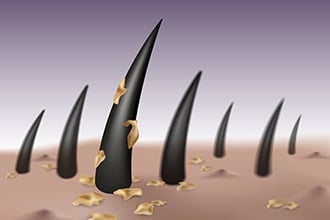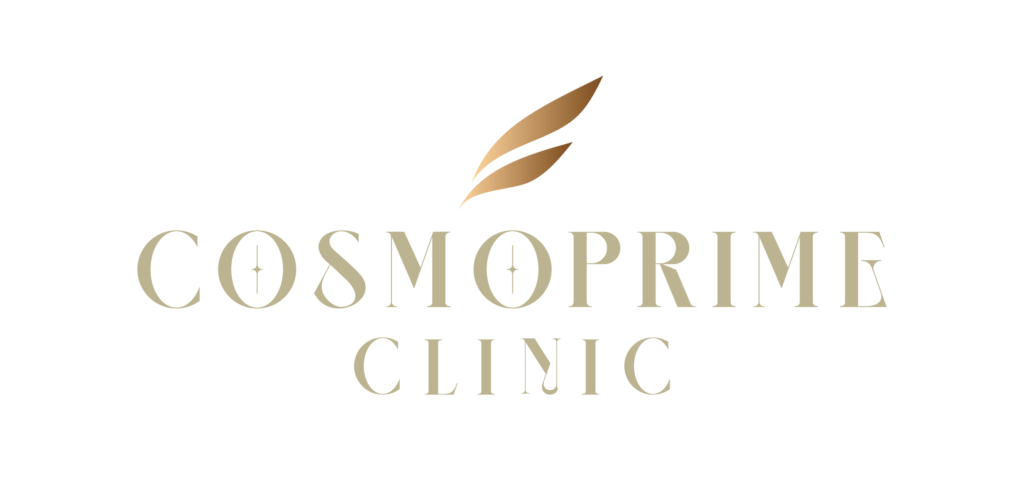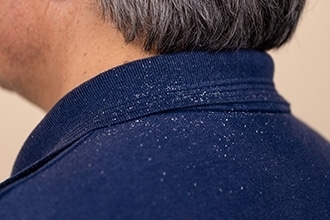Dandruff: Causes, Symptoms, and Effective Solutions
Dandruff is a common condition that many people face, causing discomfort and embarrassment in daily life. In this article, we will dive into the causes, symptoms, and treatment options for dandruff, and provide helpful insights into how you can manage it.
What is Dandruff?
Dandruff is a chronic condition that affects the scalp, and it can occur in people of all ages and genders. It’s considered a persistent scalp disorder with distinctive symptoms. Some people experience a mild case, while others may have severe dandruff.
Typically, skin cells on the scalp grow and move up through the layers of the skin, eventually shedding in about 28 days. Normally, these cells are too small to notice. However, when the process speeds up, the cells shed as larger, visible flakes, often accompanied by scalp itching—this is known as dandruff.
After washing the hair, it’s normal to shed around 487,000 skin cells per square centimeter. However, in cases where dandruff is caused by underlying conditions, the shedding can increase to 800,000 cells per square centimeter.

symptoms of Dandruff
Dandruff can manifest in several ways. Common symptoms include:
- Yellow or white flakes that are shiny and flat or thin, falling from the scalp.
- An oily, red scalp with flakes, often accompanied by itching.
- Dandruff tends to worsen during colder weather.
What Causes Dandruff?
Dandruff can have multiple causes. Here are some of the most common triggers:
-
Seborrheic Dermatitis: This condition causes the skin to become oily, red, and flaky. It can affect various areas of the body, including the scalp, eyebrows, and the areas around the nose, armpits, and groin. In infants, it is referred to as Cradle Cap.
-
Tinea Capitis (Scalp Ringworm): A fungal infection that spreads deep into the hair follicles, causing itching and possible hair loss in patches.
-
Malassezia Yeast: A yeast that naturally resides on the scalp, feeding on the oils produced by the sebaceous glands. When this yeast grows excessively, it can irritate the skin, leading to rapid cell turnover, which results in dandruff.
-
Overuse of Harsh Shampoos: Frequent use of harsh shampoos can strip the scalp of its natural oils, potentially leading to dryness and dandruff.
-
Hair Styling Products and Allergies: Certain hair styling products, chemicals, or allergens can trigger scalp irritation and dandruff.
-
Poor Nutrition: A diet lacking in certain nutrients can contribute to skin health issues, including dandruff.
-
Stress: Emotional stress can sometimes trigger or worsen dandruff by affecting the immune system and skin health.
How to Treat and Manage Dandruff
Managing dandruff often involves identifying the underlying cause. Here are some tips for treatment:
- Shampoo with Anti-Dandruff Products: Use shampoos that contain active ingredients like zinc pyrithione, selenium sulfide, or ketoconazole.
- Regular Scalp Care: Maintain a consistent scalp care routine to keep the scalp clean and hydrated.
- Avoid Harsh Chemicals: Avoid overusing products with harsh chemicals, which can irritate the scalp and worsen dandruff.
- Manage Stress: Practice stress-relieving activities such as meditation, exercise, or hobbies.
- Maintain a Balanced Diet: Ensure your diet is rich in vitamins and minerals, particularly zinc, biotin, and omega-3 fatty acids.

Conclusion
Dandruff is a common yet manageable condition that can cause irritation and embarrassment. Understanding its causes—from fungal infections to harsh hair care routines—can help you find the right treatment and keep your scalp healthy. By adopting the right products, routines, and lifestyle changes, you can effectively manage dandruff and enjoy a flake-free scalp.




